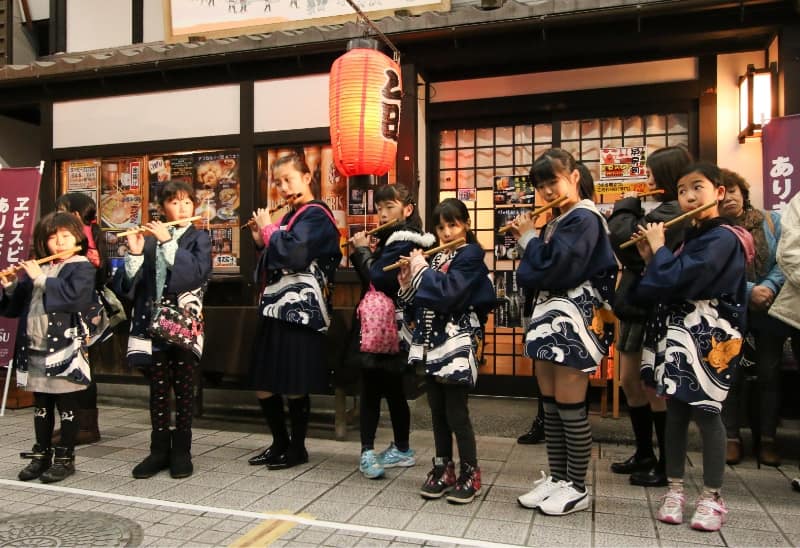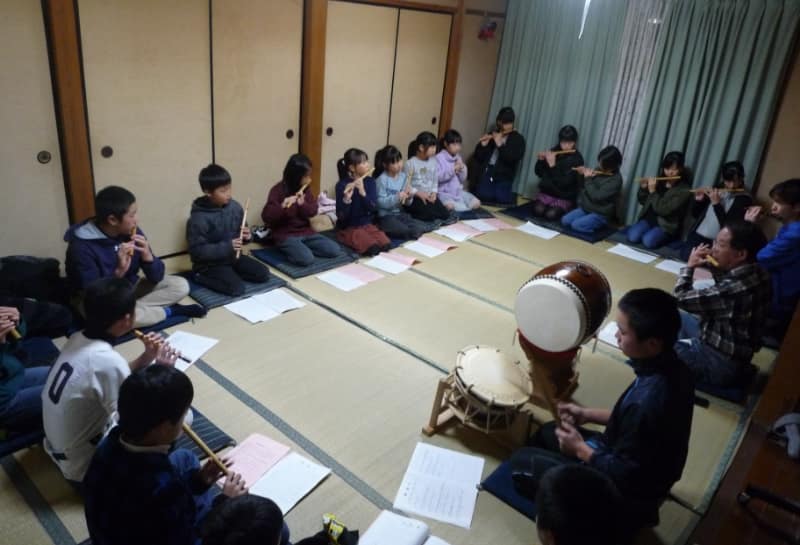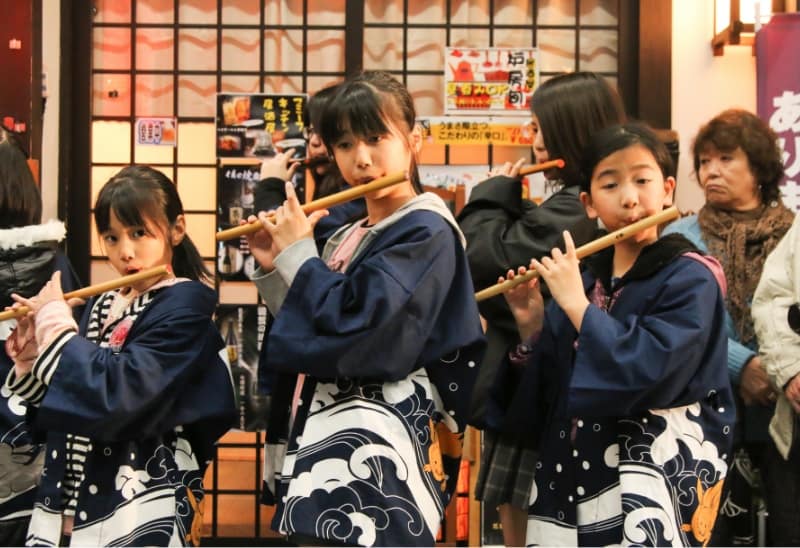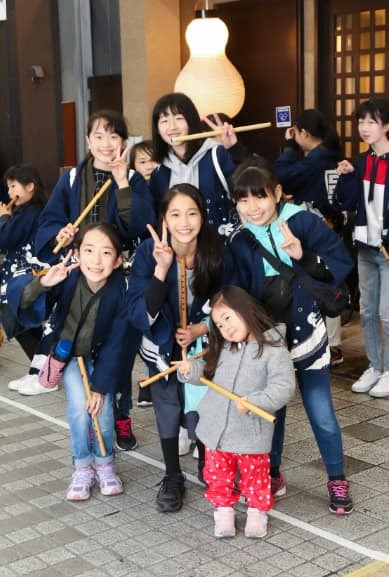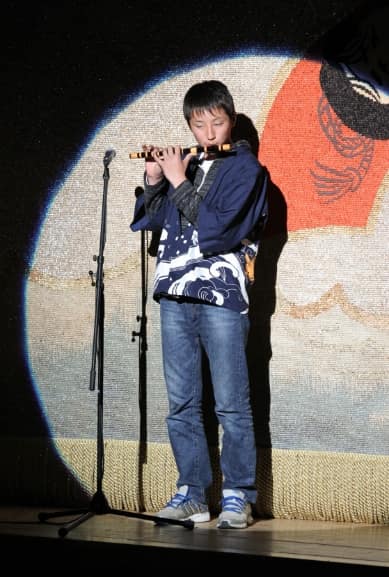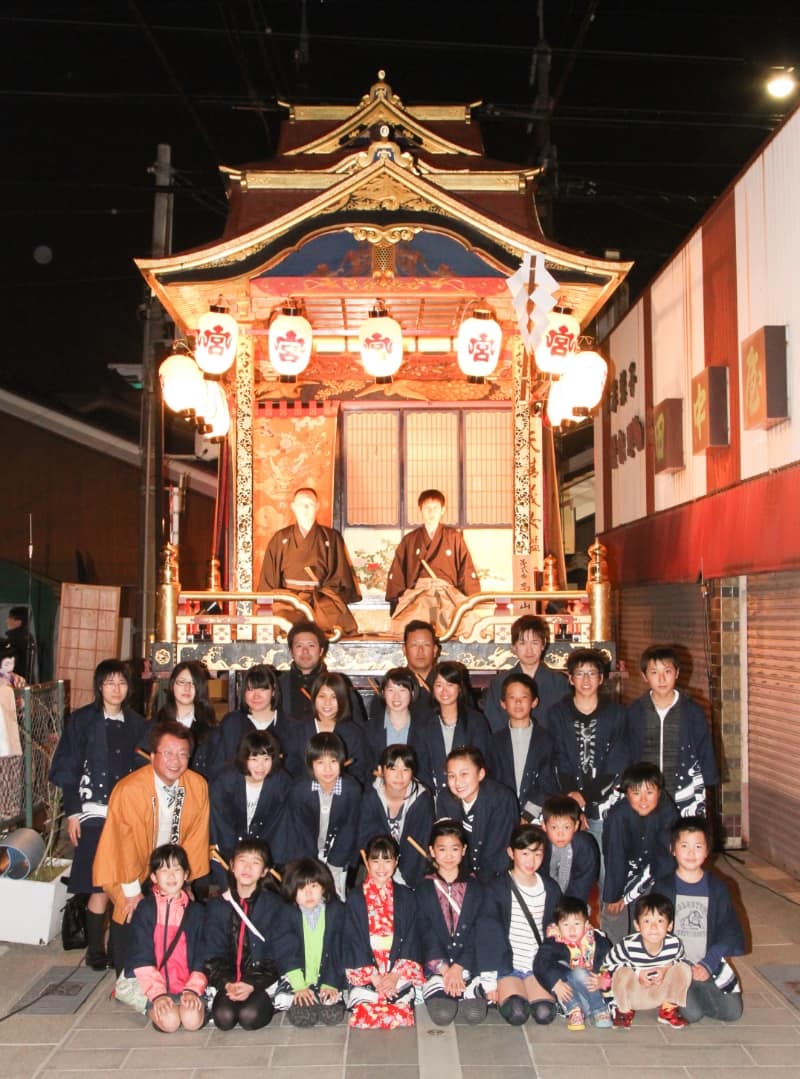What is a Shagiri Team?
Shagiri (transverse flute)
The music is played with flutes, drums, shime-daiko, and gongs inside the Tower part
on the second floor of the floats and around the floats. Shagiri performances at the festival date back to 1792 (Kansei 4). A local journal from that time mentions “shagiri wo hayashi,” which means “to play shagiri,” and it was already being performed at that time. The group consists of both drums and shime-daiko, a gong, and a transverse flute (yokobue).
The original role of the musical accompaniment was to move the yoriyosi, which were possessed by the spirits of the gods, and in the Nagahama Hikiyama Festival, the shagiri attached to the Hikiyama is always played when the Hikiyama is moved. In addition to songs played when the floats are in motion, there are also songs played when the floats are set up, before and after the start and end of Kyogen (Kabuki) performances, and on the day of the festival when the floats are used to wake up people involved in the festival. There are two main types of music: music related to the pulling of the floats and music related to the progress of the kyogen (kabuki) performance.
Takasagoyama is widely inviting children of the Yamagumi as well as children outside of the Yamagumi to share the tradition.
Shagiri practice is held once a week on Saturday evenings at Miyamachi Kaikan as the performance approaches.
OIYARI
It is also called “Noboriyama” or “Okuriyama” (meaning “going up mountain” or “coming down mountain”). Also, on the 15th, when the floats are being pulled on the way from Hachimangu Shrine to Otabisho, the “OIYARI” is played.
KAGURA
“KAGURA” will be performed after the Hachimangu shrine entrance on the 14th, the Otabisho entrance on the 15th, and the children’s kyogen performance.
HOEMA
“HOEMA” is played before the Hikiyama Kyogen begins and is the slowest of all the musical pieces. When this piece is played, people know that the kyogen performance is about to begin and gather in front of the Hikiyama.
DEBUE
As soon as the “Hoema” performance is over, the “DEBUE” flute is played alone. As soon as this dehue ends, the shamisen is played and the joruri begins.
MODORIYAMA
“MODORIYAMA” is played at the Otabisho on the 15th with the return of the portable shrine, and is the fastest and most lively of all the musical pieces. It is the fastest and liveliest of all the musical accompaniments. It is played during the post-banquet on the 16th, while the portable shrine is returning to the town.
OKOSHIDAIKO
“OKOSHIDAIKO” is played at dawn on the 13th and 15th of each month to wake up the people involved in the festival.



